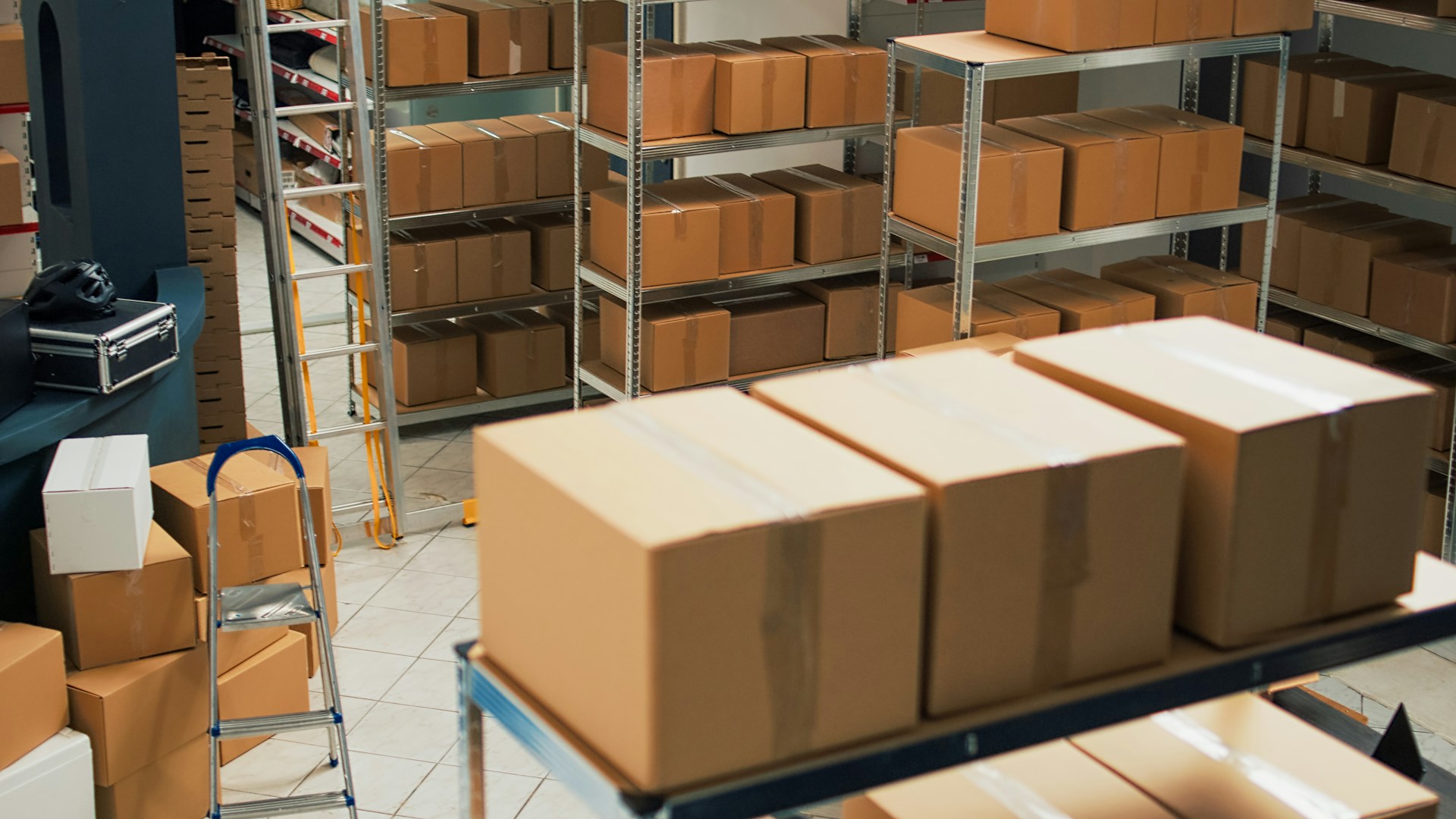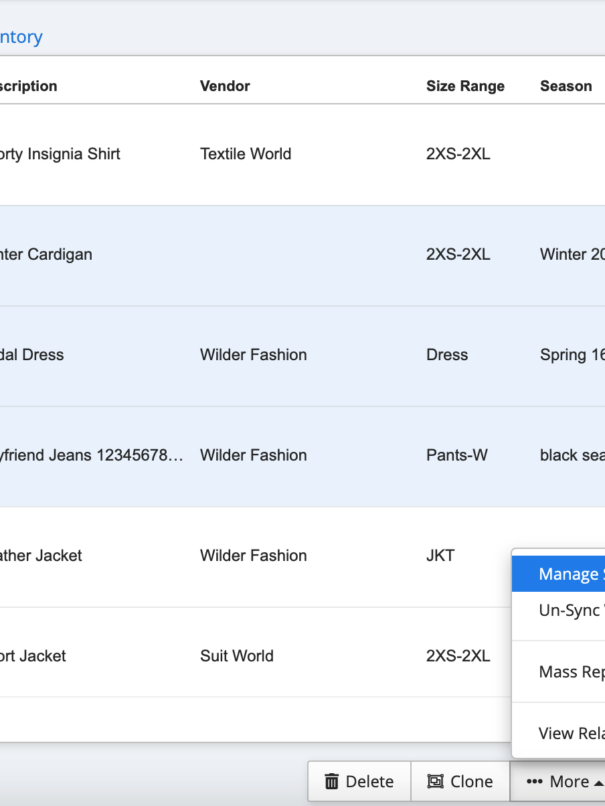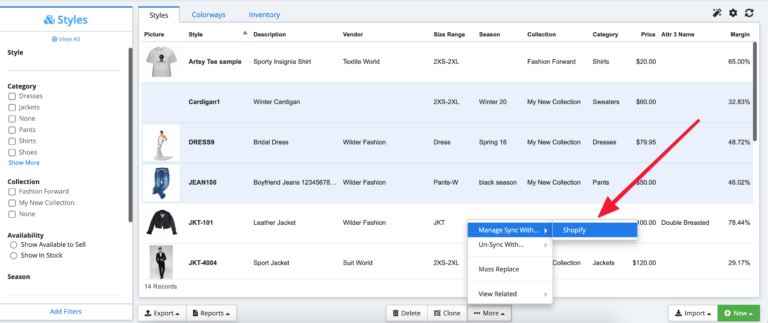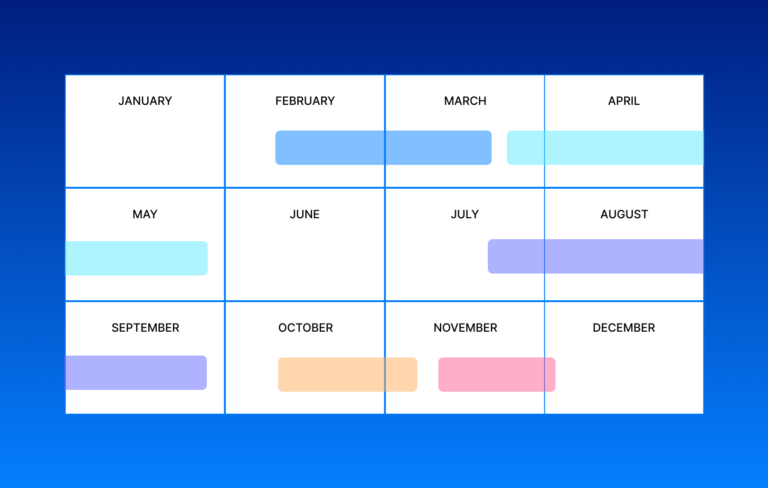Tariffs have increasingly become a major challenge for the apparel industry, introducing uncertainties and additional costs that ripple through the entire supply chain. As governments impose tariffs on imported materials and finished goods, apparel businesses find themselves grappling with higher production costs, fluctuating profit margins, and an urgent need to adjust their operational strategies. In response to these challenges, many companies are turning to Apparel Enterprise Resource Planning (ERP) systems to gain the insights they need to manage costs effectively.
This article explores how apparel businesses affected by tariffs can leverage ERP insights to streamline operations, enhance financial planning, and ultimately, maintain a competitive edge.

Understanding the Impact of Tariffs on Apparel Businesses
Tariffs are designed to protect domestic industries or serve as leverage in international trade negotiations. In the context of the apparel industry, tariffs can affect every stage of production. They increase the cost of importing raw materials, such as textiles, dyes, and specialty fabrics, while also making finished goods more expensive to procure. The immediate result is a pressure on profit margins, forcing businesses to either absorb these increased costs or pass them on to consumers. This challenge is compounded by the volatility of global trade policies, which can change rapidly and disrupt supply chains.
When tariffs are imposed, the ripple effect is felt throughout the supply chain. Manufacturers must reexamine their supplier relationships, potentially sourcing alternative materials or relocating parts of their production processes to mitigate increased costs. Retailers, on the other hand, face the difficult decision of whether to raise prices or risk a decline in consumer demand. This delicate balance underscores the importance of having real-time data and accurate forecasts—capabilities that an Apparel ERP system can provide.
The Role of Apparel ERP Systems in Cost Management
An Apparel ERP system is more than just a software solution; it is an integrated platform that brings together all aspects of a company’s operations—from procurement and production to sales and finance. In the face of tariffs, this integrated approach allows businesses to gain a comprehensive view of their operations and make informed decisions quickly. Instead of relying on fragmented data from various departments, managers can access real-time information on inventory levels, production schedules, and financial performance, ensuring that every decision is data-driven and timely.
The ERP system’s ability to consolidate data from diverse sources is especially critical when dealing with the unpredictable nature of tariffs. For example, if a tariff on imported fabric is increased unexpectedly, the ERP system can immediately provide insights into current inventory levels, order histories, and supplier performance. Armed with this information, decision-makers can explore alternative sourcing options or adjust production schedules to mitigate the financial impact. This agility is essential for maintaining competitive pricing and ensuring operational continuity.
Real-Time Data Integration and Visibility
One of the most significant advantages of an Apparel ERP system is its capability for real-time data integration. This technology unifies various operational data into one centralized platform, making it easier for management to monitor and control key aspects of the business. When tariffs disrupt the cost structure, having a clear and immediate picture of financial and operational metrics is invaluable.
Real-time visibility enables businesses to track the flow of materials from suppliers to production lines. It allows companies to assess current stock levels, monitor order fulfillment, and even detect anomalies that could indicate inefficiencies or supply chain disruptions. In an environment where cost fluctuations can occur suddenly, this level of insight ensures that managers are never caught off guard. By leveraging real-time data, companies can respond swiftly to tariff-induced changes, adjusting strategies on the fly to maintain profitability.
Optimizing Inventory and Production Planning
Accurate inventory management and production planning are paramount when tariffs drive up the cost of raw materials. An Apparel ERP system provides tools that allow businesses to forecast demand accurately and manage inventory efficiently. With historical sales data and market trend analyses at their fingertips, managers can predict which products are likely to see increased demand and adjust production schedules accordingly.
Effective inventory optimization minimizes the risk of overproduction and reduces the costs associated with holding excess stock. When tariffs make certain materials more expensive, it is crucial to ensure that every unit of inventory is accounted for and used efficiently. An ERP system helps in maintaining optimal stock levels, ensuring that capital is not unnecessarily tied up in surplus inventory. In this way, businesses can reduce storage costs and avoid potential write-offs from unsold or obsolete products.
Production planning is similarly enhanced by the insights provided by an ERP system. By aligning production schedules with current market demand, companies can avoid the pitfalls of overproduction and ensure that manufacturing processes are as efficient as possible. In a scenario where tariffs have raised the cost of raw materials, minimizing waste and maximizing production efficiency become even more critical. The ERP system facilitates this by enabling managers to synchronize production activities with inventory levels and sales forecasts, thereby creating a leaner, more responsive production process.
Detailed Cost Analysis and Margin Optimization
Tariffs invariably lead to increased costs, but the key to maintaining profitability lies in understanding where these costs are most pronounced. An Apparel ERP system excels in providing a detailed breakdown of expenses across various aspects of the production process. By analyzing costs associated with raw materials, labor, and logistics, businesses can pinpoint the areas where tariffs have the greatest impact.
This granular cost analysis is essential for developing effective pricing strategies. When management understands exactly how much tariffs are inflating costs, they can make more informed decisions about price adjustments. Rather than implementing across-the-board price hikes, companies can target specific areas where the cost increase is most severe, thereby protecting profit margins without alienating price-sensitive consumers.
Scenario planning is another powerful feature of modern ERP systems. By simulating different tariff scenarios, businesses can forecast the potential financial impact of changes in tariff rates. This capability allows for strategic planning that is both proactive and adaptable. Companies can test various cost-saving measures—such as sourcing materials from alternative suppliers or investing in process automation—before committing to a particular strategy. Through this rigorous analysis, apparel businesses can maintain a delicate balance between cost management and competitive pricing.
Streamlining Supply Chain and Supplier Management
The interconnected nature of global supply chains means that tariffs do not just affect internal operations—they also have a significant impact on supplier relationships and logistics. An Apparel ERP system offers robust tools for managing these external interactions, ensuring that businesses can maintain a stable supply of materials even when tariffs disrupt traditional channels.
By providing detailed insights into supplier performance, an ERP system allows companies to assess the reliability and cost-effectiveness of their current partners. When tariffs increase the cost of imported materials, this data becomes critical in deciding whether to renegotiate terms or seek alternative suppliers. A transparent view of supplier performance can reveal opportunities for cost savings or highlight potential risks in the supply chain. This information is essential for maintaining a resilient supply network that can adapt to sudden changes in tariff policies.
Logistics management is another area where ERP systems shine. Tariffs can complicate shipping routes and increase transportation costs, but with an ERP system, companies can optimize logistics operations to counter these challenges. Real-time tracking of shipments, integrated with detailed cost analyses, enables businesses to identify the most efficient routes and modes of transportation. By streamlining the movement of goods, apparel companies can reduce delays and ensure that products reach the market in a timely and cost-effective manner.
Enhancing Financial Planning and Risk Management
Financial planning in an era of tariff volatility requires both precision and adaptability. An Apparel ERP system provides advanced budgeting and forecasting tools that are essential for navigating this uncertain environment. By continuously monitoring financial performance in real time, companies can adjust their budgets dynamically to account for sudden increases in material costs or changes in production expenses.
The forecasting capabilities of an ERP system are particularly valuable when dealing with tariffs. Historical data combined with real-time insights allows for accurate predictions of future costs, enabling companies to prepare contingency plans well in advance. This proactive approach to financial management is crucial in minimizing the negative impacts of tariffs. By simulating various economic scenarios, apparel businesses can identify potential vulnerabilities in their cost structures and develop strategies to mitigate these risks.
Risk management is another critical aspect of financial planning that benefits from ERP insights. In addition to predicting future costs, an ERP system can help identify areas of the business that are most exposed to tariff risks. This level of detailed analysis allows companies to create targeted risk management strategies that address specific vulnerabilities. Whether it involves diversifying the supplier base or investing in more efficient production technologies, the insights provided by an ERP system enable companies to build a more resilient financial framework.
Boosting Customer Relationship Management
Tariffs often force apparel businesses to adjust their pricing structures, which can have a direct impact on consumer behavior. In such scenarios, maintaining strong customer relationships becomes even more important. An Apparel ERP system with integrated customer relationship management (CRM) capabilities allows companies to monitor shifts in consumer demand and adapt their marketing strategies accordingly.
Through detailed analyses of purchasing trends and customer feedback, ERP systems provide insights into how pricing changes are affecting market behavior. This information enables businesses to implement targeted promotions and personalized communications that reassure customers and maintain loyalty, even when prices are adjusted due to increased costs. By keeping a close eye on customer behavior, apparel businesses can ensure that they continue to meet market expectations and retain a competitive edge, even in a challenging economic environment.
Moreover, an ERP system facilitates seamless communication between various departments, ensuring that marketing, sales, and customer service teams are all aligned. This alignment is critical when navigating the complexities introduced by tariffs, as it ensures that all customer-facing messages are consistent and that any changes in pricing or product availability are clearly communicated. In this way, the ERP system not only helps manage internal costs but also supports the broader goal of maintaining strong, enduring customer relationships.
Implementing an Apparel ERP System: Best Practices
While the benefits of an Apparel ERP system are clear, successful implementation requires careful planning and execution. Companies must begin with a thorough needs assessment to understand which areas of the business are most affected by tariffs and where the ERP system can provide the most value. It is essential to choose a solution that is specifically tailored to the apparel industry, one that offers the flexibility to integrate with existing processes while being scalable enough to grow with the business.
Engaging stakeholders from across the organization—from procurement and production to sales and finance—is a crucial part of the implementation process. This collaboration ensures that the ERP system addresses the needs of every department and that employees are adequately trained to use the new tools effectively. Continuous training and change management are integral to ensuring that the ERP system delivers sustained value over time.
Finally, it is important to view the ERP system not as a one-time investment, but as an evolving tool that requires ongoing refinement. Regular reviews of system performance, along with updates based on emerging market trends and operational feedback, can help maintain the ERP system’s relevance and effectiveness. By fostering a culture of continuous improvement, apparel businesses can ensure that they are always ready to respond to new challenges, including future tariff changes.
Conclusion
Tariffs present a formidable challenge for apparel businesses, increasing costs and introducing uncertainty into every aspect of the production and supply chain. However, by harnessing the power of an Apparel ERP system, companies can transform these challenges into opportunities for strategic growth and operational efficiency. With real-time data integration, detailed cost analysis, optimized inventory management, and robust financial planning, ERP insights provide the tools needed to navigate the complexities of tariff-induced cost fluctuations.
The comprehensive view offered by an ERP system enables businesses to make proactive decisions—whether it’s adjusting production schedules, renegotiating supplier contracts, or fine-tuning pricing strategies. In doing so, apparel companies can maintain healthy profit margins, optimize their operations, and continue to meet customer expectations even in a volatile economic landscape.
Investing in an Apparel ERP system is more than just a technological upgrade—it is a strategic move towards building a resilient, future-ready organization. In a world where tariffs and other external pressures are likely to remain a constant challenge, the insights provided by an ERP system can empower apparel businesses to remain agile, innovative, and competitive. By embracing this technology, companies are not only mitigating the risks associated with tariffs but also setting the stage for long-term success and sustainable growth.
Ultimately, the journey towards optimized cost management and operational excellence begins with a commitment to data-driven decision-making. With the right ERP system in place, apparel businesses can confidently navigate the uncertainties of global trade, turning tariff challenges into opportunities for innovation and competitive advantage.







